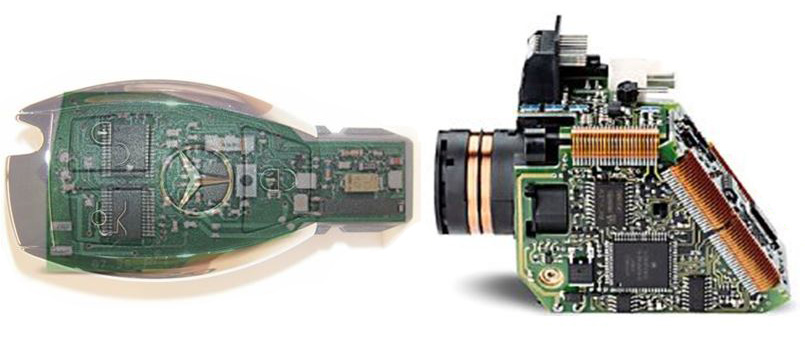Topics at the Allianz Center for Technology:
Updated requirements for the electronic immobilizer

April 2023
The number of total car thefts in Germany has fallen from 105,500 permanently missing insured vehicles in 1993 to less than 20,000 stolen vehicles a year today, despite a steady growth the number of vehicles on the road. One of the main reasons is the electronic immobilizer, which prevents an unauthorized engine start or at least delays it for some time. This delay is a deterrent in many cases, because a theft has to happen quickly or the attempt will be abandoned.
As a result of the massive increase in total thefts following German reunification and the opening of the borders, the first requirements for an electronic immobilizer were developed at the Allianz Center for Technology in 1997 and implemented in new vehicle models by the automotive industry. A key feature of these immobilizers was that they are automatically armed and disarmed so that the driver cannot forget any necessary operating step. Since 2007, an electronic immobilizer has been part of the homologation of new vehicle models and is therefore present throughout Europe.
The latest developments in the automotive industry are transforming vehicles into connected systems with entirely new possibilities not only for services, but also for innovative functions such as the key in the smartphone. Connectivity also creates new access points for thieves to get into cars. However, networking also offers new protection options for security, i.e. authorization of security-relevant settings.
In order to minimize the risks arising from connectivity and to exploit the protection benefits, the Allianz Center for Technology has not replaced the requirements for electronic immobilizers that have been in force since 2007, but has supplemented them with requirements adapted to the new technologies. This practice takes into account the currently heterogeneous development statuses of new models.
These requirements are formulated in a technology-open manner as guidelines. They focus in particular on the forensic needs after a theft in order to support the vehicle owner in his claim with objective data and to enable the insurance company to process claims based on facts
The document is available here and in the download area.